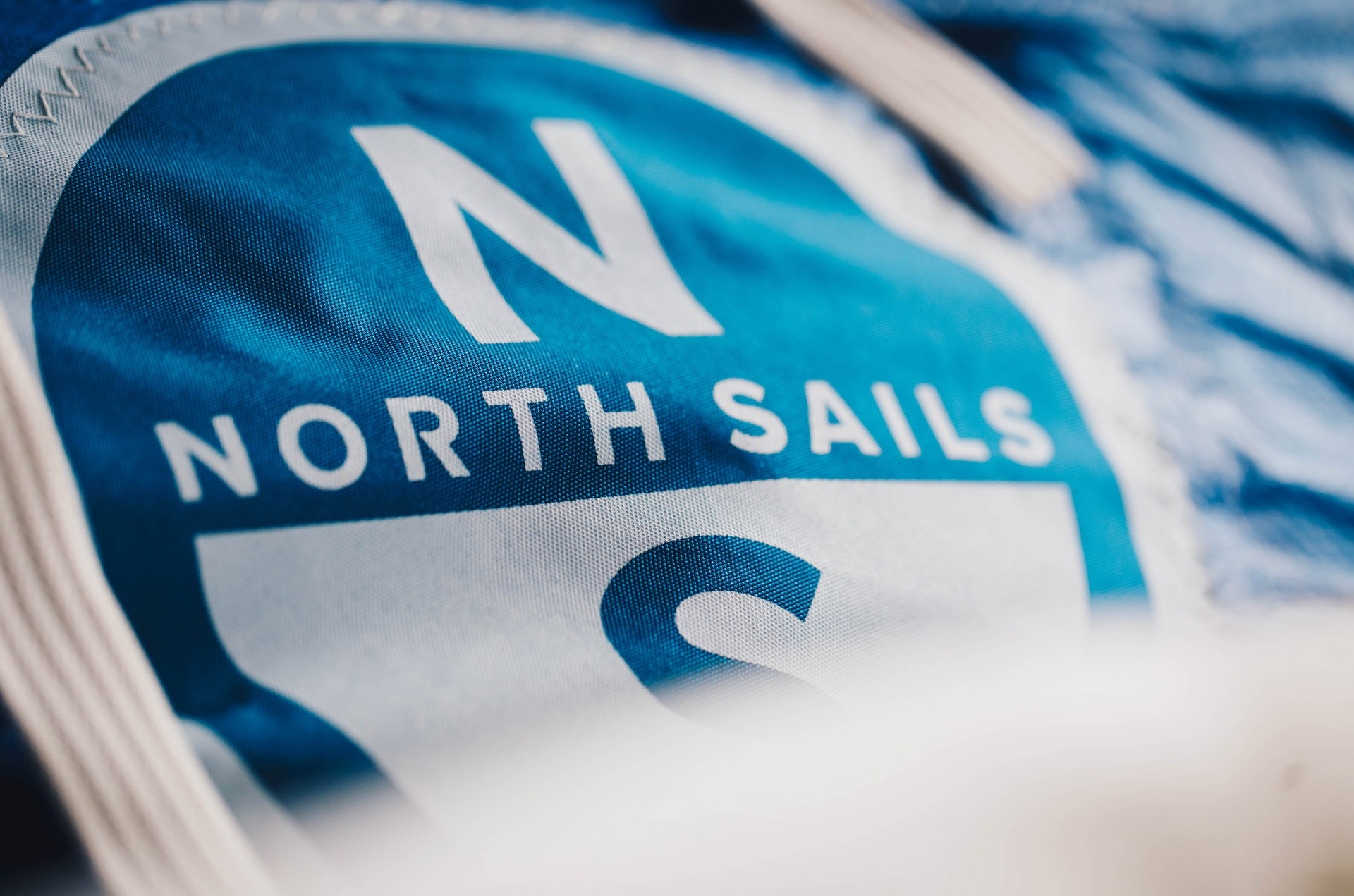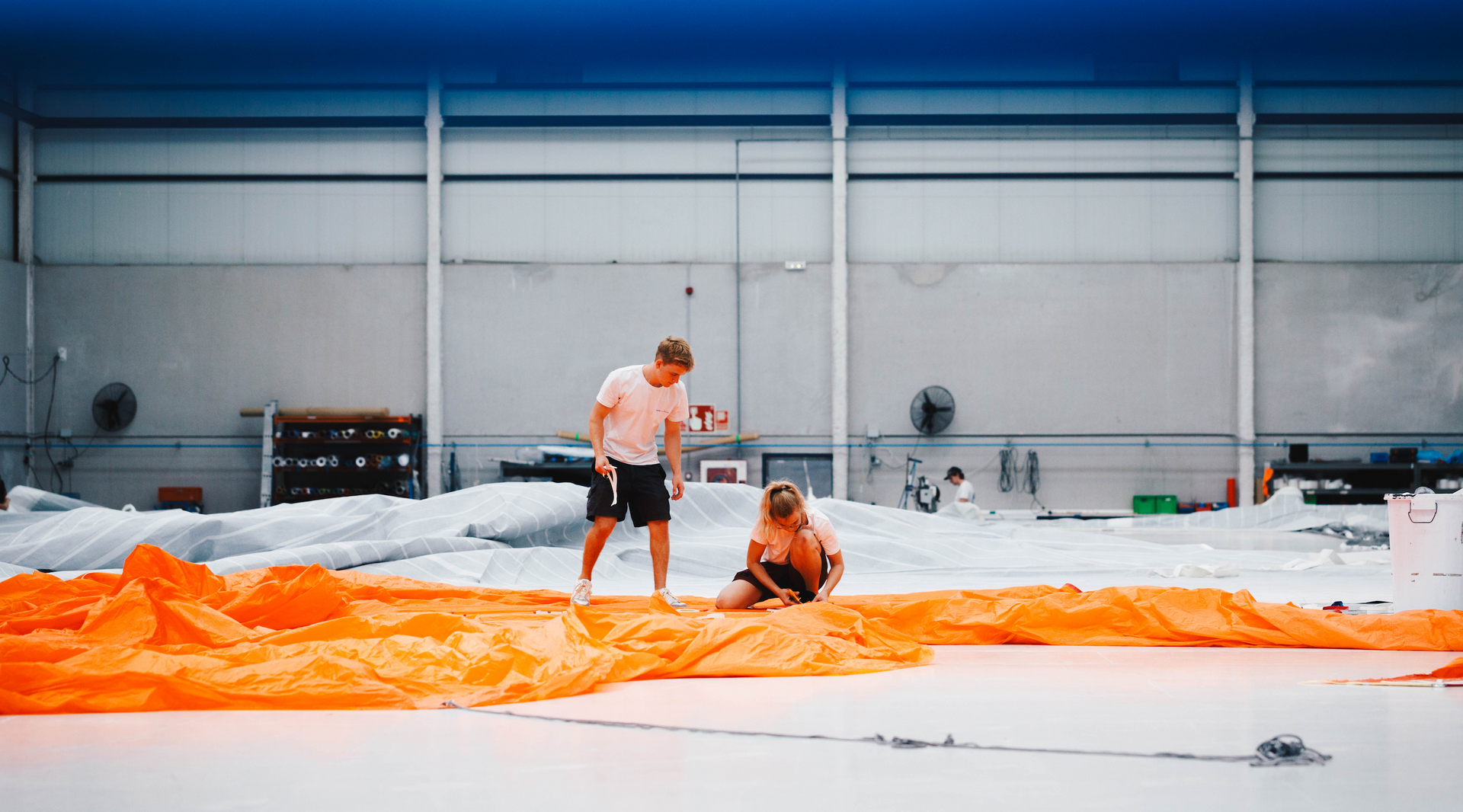4 KEY COMPONENTS TO WINTER SAIL CARE
Sail Preservation Tips Backed by Over 60 Years of Sailing Service Experience

REPAIRING
Mildew, chafing, UV cover tears and corner webbing and stitching degradation are common issues we are looking for when a sail come in for sail care. We can then assess and make repairs. Chafing: There are areas on the headsail where we see excessive chafing.including where the lifelines terminate at the bow pulpit, on the leech where the sail can hit the shrouds, at the stanchions heads, and up the leech from flogging. UV Cover wear & tear: The UV cover is a sacrificial material attached to the leech or corner of a furling sail that protect the sail from sun degradation and dirt when the sail is rolled away. We replace these on a regular basis. The risk of not replacing the UV when it is degraded is rips and tears opening. If this happens during a wind storm at the dock, it will force the sail out of the furled position and shred the leech. Corner webbing degradation: Webbing is the strapping material that is sewn onto the sail at the corners holding on the headboard, clew ring and tack ring. When the webbing is degraded by mildew, pollution, sun decay and chafing, it shrinks and gets stiff. Over time the webbing can become very stiff and turn either green or black from mildew growing in the fibers. If this is the case for your sail, have your sailmaker replace the webbing right away. Stitching degradation: Like the webbing, threads in a sail can be susceptible to mildew, pollution, sun decay and just plane chafing. It is hard to see and can take a trained eye to identify and repair. Minor restitching once a year can prevent large repairs during the life of the sail.
RESHAPING
When we look at a sail for shape analysis, we are looking at the draft position it helps us if you can take photos of the sails from mid-foot looking up towards the head. This allows us to analyze the draft of the sail and make decisions as to what direction to go in reshaping the sail. Reshaping a sail is the best way to get that extra season or two out of your sails. That said, reshaping is not going to make a 10 year old sail new again. Over time different sail materials shrink and stretch in different directions and areas of the sail. For instance, the luff rope can shrink, changing the luff shape of the sail and consequently causing the draft to move deeper towards the leech. The leech tape can shrink and the leech can get soft from flogging, causing cupping and degrading the performance of the sail. Our Service Team can adjust and replace components of some sails before it’s time to consider replacing.
CLEANING
Mooring your sailboat in the city can be rough on sails as far as keeping them clean. There are a number of ways to clean sails. Mildew is hard to clean. Mildew is made up of microscopic organisms that thrive on an atmosphere of air and water. It’s easy to clean if only on the surface of a sail. However, if mildew gets in the thread structure, it will cause permanent staining. We see this on many older taffeta surface laminated sails. Sailmakers use a combination of chemicals and methods in a controlled atmosphere to clean a sail effectively and safely. If you are self cleaning your sails, we recommend you still take your sail in for an inspection once a year prior to cleaning. Our 10 point inspection is the ideal option to give your sail a good once over before another season.

OUR 10 POINT INSPECTION INCLUDES:
- Inspect head, tack, clew and reef attachments. Inspect webbing & hardware for chafe and UV damage. Inspect hand stitching.
- Inspect luff tapes and luff attachments.
- Inspect for chafe at external hardware contact points at spreaders, shrouds, stanchions etc.
- Inspect leech line, foot line and attachment system.
- Inspect sail for UV damage and proper furling side (if applicable).
- Inspect batten pocket ends, attachments and fit (if applicable).
- Inspect sail body for condition of cloth, seams, sail numbers, draft stripes and windows. Replace or add telltales (complimentary).
- Inspect miscellaneous gear: Spinnaker Snuffer line and hoop, mainsail external flaking system, headsail vertical battens, UV covers, etc.
- Inspect sailbag draw string, zippers, web straps, and label properly.
- Sail report, 10 checkpoints, comments.
STORAGE
Be sure your sails are dry and clean before flaking or rolling them for storage. Store your sail in a dry place, preferably cool as opposed to hot. Good places are up off the floor in efforts to keep vermin like squirrels and mice from making their home in the sail. In the attic or the eves of a garage are not recommended if the temperature is not controlled. Questions about end of season sail care for your sails? Connect with our service manager Luke Logan or North Sails experts Perry Lewis and Keith Church. Our team is here to help with all your sailcare needs.



























